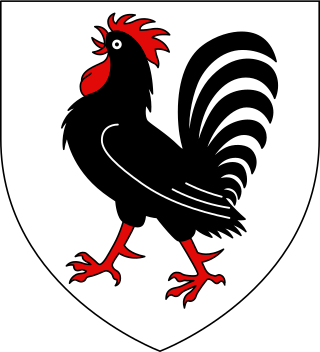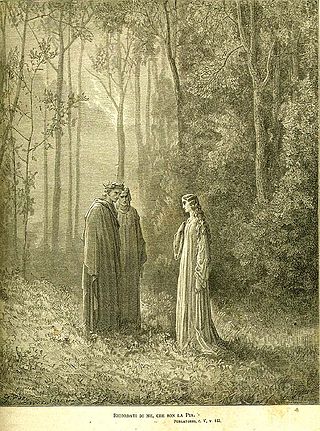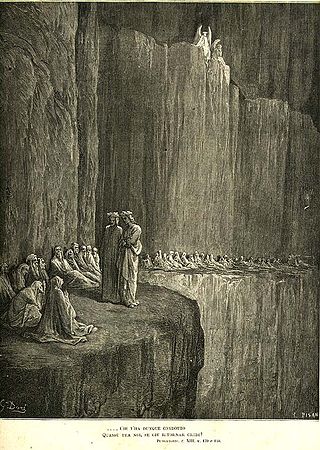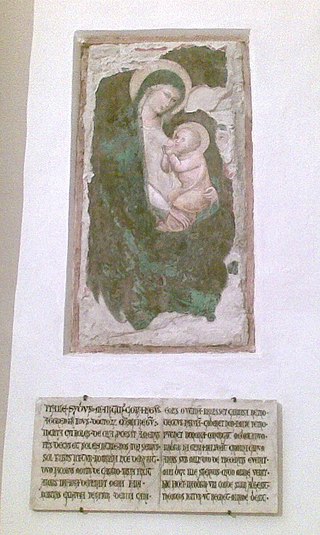
Sordello da Goito or Sordel de Goit (sometimes Sordell) was a 13th-century Italian troubadour. His life and work have inspired several authors including Dante Alighieri, Robert Browning, and Samuel Beckett.

Sordello da Goito or Sordel de Goit (sometimes Sordell) was a 13th-century Italian troubadour. His life and work have inspired several authors including Dante Alighieri, Robert Browning, and Samuel Beckett.
Sordello was born in the municipality of Goito in the province of Mantua. About 1220 he was in a tavern brawl in Florence; and in 1226, while at the court of Richard of Bonifazio in Verona, he abducted his master's wife, Cunizza, at the instigation of her brother, Ezzelino III da Romano. The scandal resulted in his flight (1229) to Provence, where he seems to have remained for some time. He entered the service of Charles of Anjou, and probably accompanied him (1265) on his Naples expedition; in 1266 he was a prisoner in Naples. The last documentary mention of him is in 1269, and he is supposed to have died in Provence. His appearance in Dante Alighieri's Divine Comedy among the spirits of those who, though redeemed, were prevented from making a final confession and reconciliation by sudden death, suggests that he was murdered, although this may be Dante's own conjecture. [1]
So far as we have authentic facts about his life, Sordello was the most famous of the Italian troubadours. His didactic poem L’ensenhamen d’onor, and his love songs and satirical pieces have little in common with Dante's presentation, but the invective against negligent princes which Dante puts into his mouth in the 7th canto of the Purgatorio is more adequately paralleled in his sirventes-planh (1237) on the death of his patron Blacatz, where he invites the princes of Christendom to feed on the heart of the hero. [1]

Sordello was praised by Dante around 1305 in his treatise De vulgari eloquentia . [1] He also appears as a character in the Divine Comedy , composed between 1308 and 1321, where he is featured in cantos 6, 7, and 8 of Purgatorio . The pilgrim meets Sordello among the souls who repented late in life or were violently murdered in Ante-Purgatory, which suggests that Dante thought that Sordello was murdered. When first approached by Dante and Virgil in Purgatorio 6, Sordello is clearly distinguished from other souls and stays silent. Sordello's first appearance is comparable to a lion eyeing the approaching travelers attentively. [2] It is only when Virgil begs him for the best upward path that Sordello engages with the two poets and asks them about their city and life. Once Virgil mentions his city, Mantua, Sordello embraces him and expresses his excitement at hearing the sound of his city. Sordello thus shows that he regards himself as Virgil's neighbor and friend due to their common birthplace, and the love they both share for Mantua is enough to prompt their warm reaction to one another. [3] Sordello continues to walk with the pair for three cantos. Dante uses Sordello's patriotism as a starting point for an aside that presents a breakdown of Italian politics to denounce Italy and its corrupted morals, violence, and lack of effective leadership (Purgatorio 6.76-151). [4] [3] In the narrative, Sordello also serves to teach Dante and Virgil about the workings of Ante-Purgatory, and he leads them out of it, until they all reach of the Valley of Rulers. [4] Upon reaching the Valley of Rulers, Sordello points out the notable kings and princes surrounding the trio. Those mentioned are Rudolph of Hapsburg, Ottokar II of Bohemia, Philip III the Bold of France, Peter III of Aragon, among others.
Sordello is also the hero of the well-known poem Sordello by Robert Browning, published in 1840. [1] He is praised for his passion in Oscar Wilde's 1881 poem "Amor Intellectualis". Ezra Pound also references him in the Cantos.
Furthermore, Sordello is briefly referred to in Samuel Beckett's 1951 novels Molloy and Malone Dies . Numerous references to Sordello occur in Roberto Bolaño's 2000 novella By Night in Chile , and he is a principal character in Robert Shea's two-volume historical novel The Saracen , published in 1989.
{{cite web}}: CS1 maint: url-status (link)
Dante Alighieri, most likely baptized Durante di Alighiero degli Alighieri and often referred to as Dante, was an Italian poet, writer and philosopher. His Divine Comedy, originally called Comedìa and later christened Divina by Giovanni Boccaccio, is widely considered one of the most important poems of the Middle Ages and the greatest literary work in the Italian language.

The Divine Comedy is an Italian narrative poem by Dante Alighieri, begun c. 1308 and completed around 1321, shortly before the author's death. It is widely considered the pre-eminent work in Italian literature and one of the greatest works of world literature. The poem's imaginative vision of the afterlife is representative of the medieval worldview as it existed in the Western Church by the 14th century. It helped establish the Tuscan language, in which it is written, as the standardized Italian language. It is divided into three parts: Inferno, Purgatorio, and Paradiso.
Allen Mandelbaum was an American professor of literature and the humanities, poet, and translator from Classical Greek, Latin and Italian. His translations of classic works gained him numerous awards in Italy and the United States.

Purgatorio is the second part of Dante's Divine Comedy, following the Inferno and preceding the Paradiso. The poem was written in the early 14th century. It is an allegory telling of the climb of Dante up the Mount of Purgatory, guided by the Roman poet Virgil – except for the last four cantos, at which point Beatrice takes over as Dante's guide. Allegorically, Purgatorio represents the penitent Christian life. In describing the climb Dante discusses the nature of sin, examples of vice and virtue, as well as moral issues in politics and in the Church. The poem posits the theory that all sins arise from love – either perverted love directed towards others' harm, or deficient love, or the disordered or excessive love of good things.
Dolce Stil Novo, Italian for "sweet new style," is the name given to a literary movement in 13th and 14th century Italy. Influenced by the Sicilian School and Tuscan poetry, its main theme is Divine Love. The name Dolce Stil Novo was used for the first time by Dante Alighieri in Purgatorio, the second canticle of the Divina Commedia. In the Divina Commedia Purgatory he meets Bonagiunta Orbicciani, a 13th-century Italian poet, who tells Dante that Dante himself, Guido Guinizelli, and Guido Cavalcanti had been able to create a new genre: a stil novo.

Belacqua is a minor character in Dante Alighieri's Purgatorio, Canto IV. He is considered the epitome of indolence and laziness, but he is nonetheless saved from the punishment of Hell in Inferno and often viewed as a comic element in the poem for his wit. The relevance of Belacqua is also driven by Samuel Beckett's strong interest in this character.
Cunizza da Romano was an Italian noblewoman and a member of the da Romano dynasty, one of the most prominent families in northeastern Italy, Cunizza's marriages and liaisons, most notably with troubadour Sordello da Goito, are widely documented. Cunizza also appears as a character in a number of works of literature, such as Dante Alighieri's Divine Comedy.

Ugolino Visconti, better known as Nino, was the Giudice of Gallura from 1275 or 1276 to his death. He was a son of Giovanni Visconti and grandson of Ugolino della Gherardesca. He was the first husband of Beatrice d'Este, daughter of Obizzo II d'Este. His symbol was a cock.

Joannaof Gallura, also known as Giovanna Visconti, was the last titular Judge (giudicessa) of Gallura. Joanna claimed her rights in Sardinia to no avail and eventually sold them to her relatives, the Visconti of Milan, who later sold them to the Crown of Aragon. She is mentioned passingly by Dante Alighieri in the Divine Comedy. Her father, a friend of Dante's, but consigned to Purgatory with the other negligent rulers, asks her to be reminded of him.
Sordello is a narrative poem by the English poet Robert Browning. Worked on for seven years, and largely written between 1836 and 1840, it was published in March 1840. It consists of a fictionalised version of the life of Sordello da Goito, a 13th-century Lombard troubadour depicted in Canto VI of Dante Alighieri's Purgatorio.
Bonagiunta Orbicciani, also called Bonaggiunta and Urbicciani, was an Italian poet of the Tuscan School, which drew on the work of the Sicilian School. His main occupation was as a judge and notary. Fewer than forty of his poems survive.

Casella was an Italian composer and singer, none of whose works have survived.

Pia de' Tolomei was an Italian noblewoman from Siena identified as "la Pia," a minor character in Dante's Divine Comedy who was murdered by her husband. Her brief presence in the poem has inspired many works in art, music, literature, and cinema. Her character in the Divine Comedy is noted for her compassion and serves a greater program among the characters in her canto, as well as the female characters in the entire poem.

Bonconte I da Montefeltro was an Italian Ghibelline general. He led Ghibelline forces in several engagements until his battlefield death. Dante Alighieri featured Montefeltro as a character in the Divine Comedy.
Giovanna da Montefeltro was a thirteenth-century Italian noblewoman and the wife of Bonconte I da Montefeltro. She is referenced by Dante Alighieri in his Divine Comedy for not remembering her late husband in her prayers.

Sapia Salvani was a Sienese noblewoman. In Dante Alighieri's Divine Comedy, she is placed among the envious souls of Purgatory for having rejoiced when her fellow Sienese townspeople, led by her nephew Provenzano Salvani, lost to the Florentine Guelphs at the Battle of Colle Val d'Elsa.

The second circle of hell is depicted in Dante Alighieri's 14th-century poem Inferno, the first part of the Divine Comedy. Inferno tells the story of Dante's journey through a vision of the Christian hell ordered into nine circles corresponding to classifications of sin; the second circle represents the sin of lust, where the lustful are punished by being buffeted within an endless tempest.

Jacopo del Cassero was a magistrate and condottiero from late medieval Italy. He appears as a character in Dante Alighieri's Purgatorio.

Cato the Younger was an Ancient Roman politician during the late republic. He was famous in ancient times and through to the modern era as an exemplar of moral virtue and as a martyr for the Roman republic.